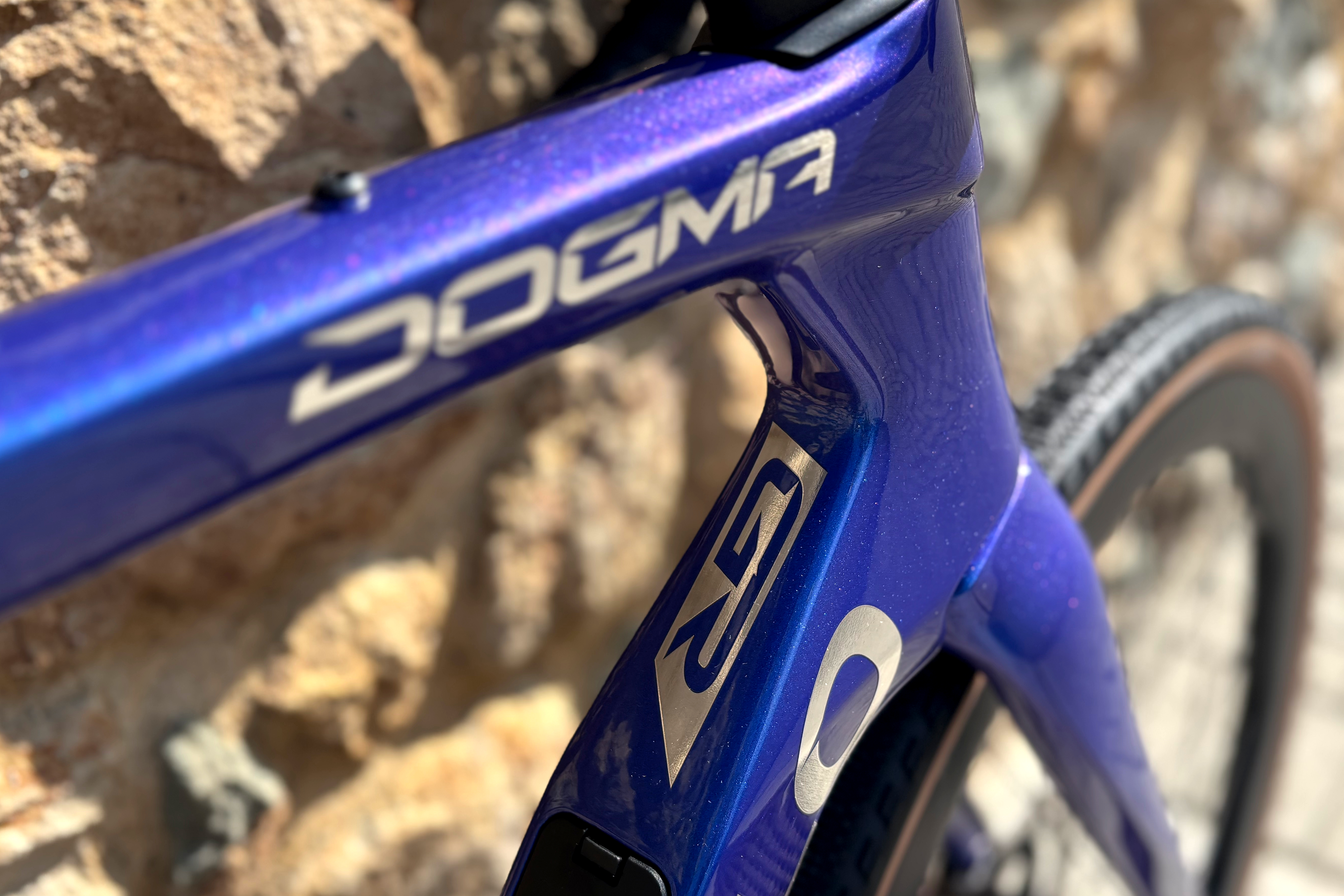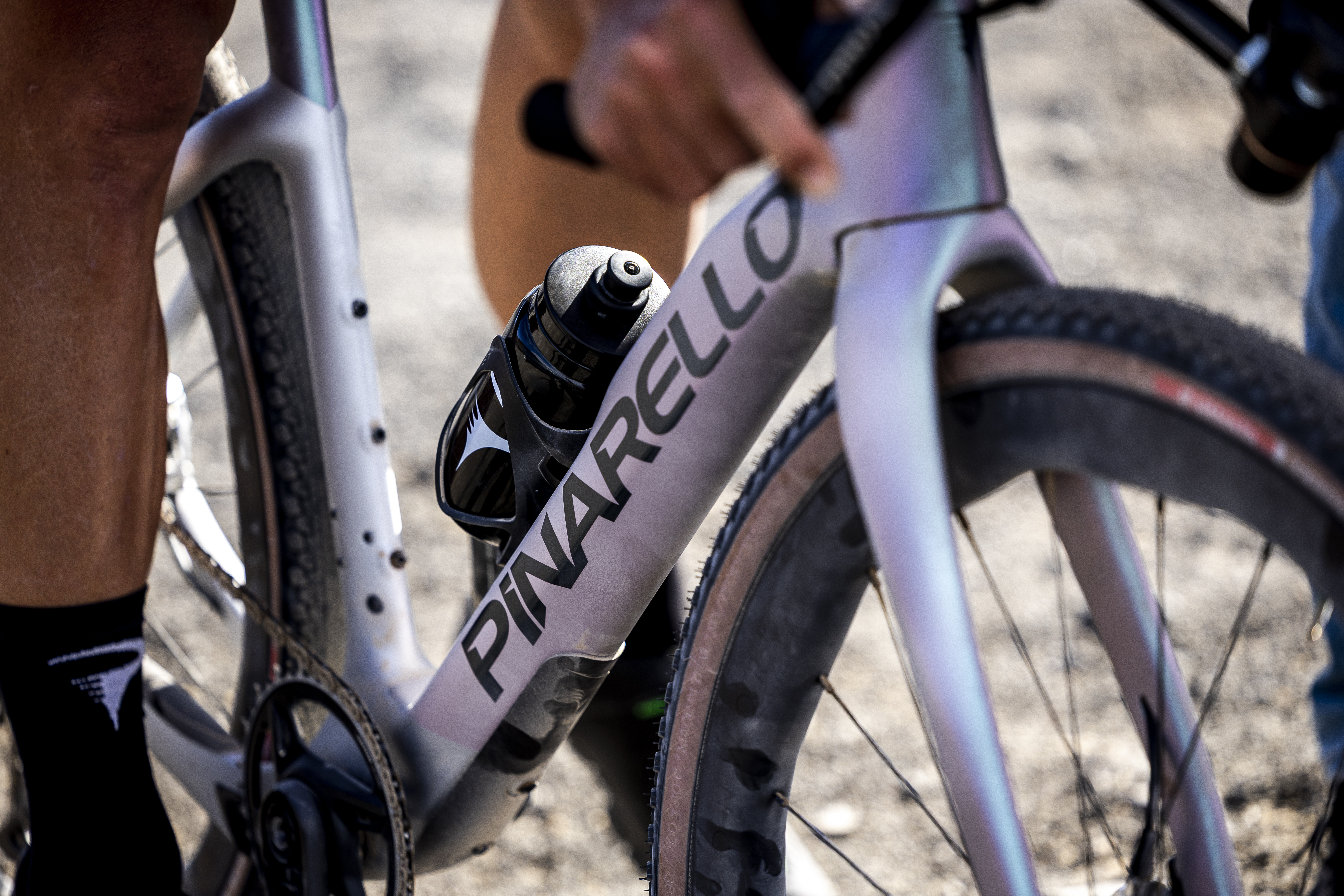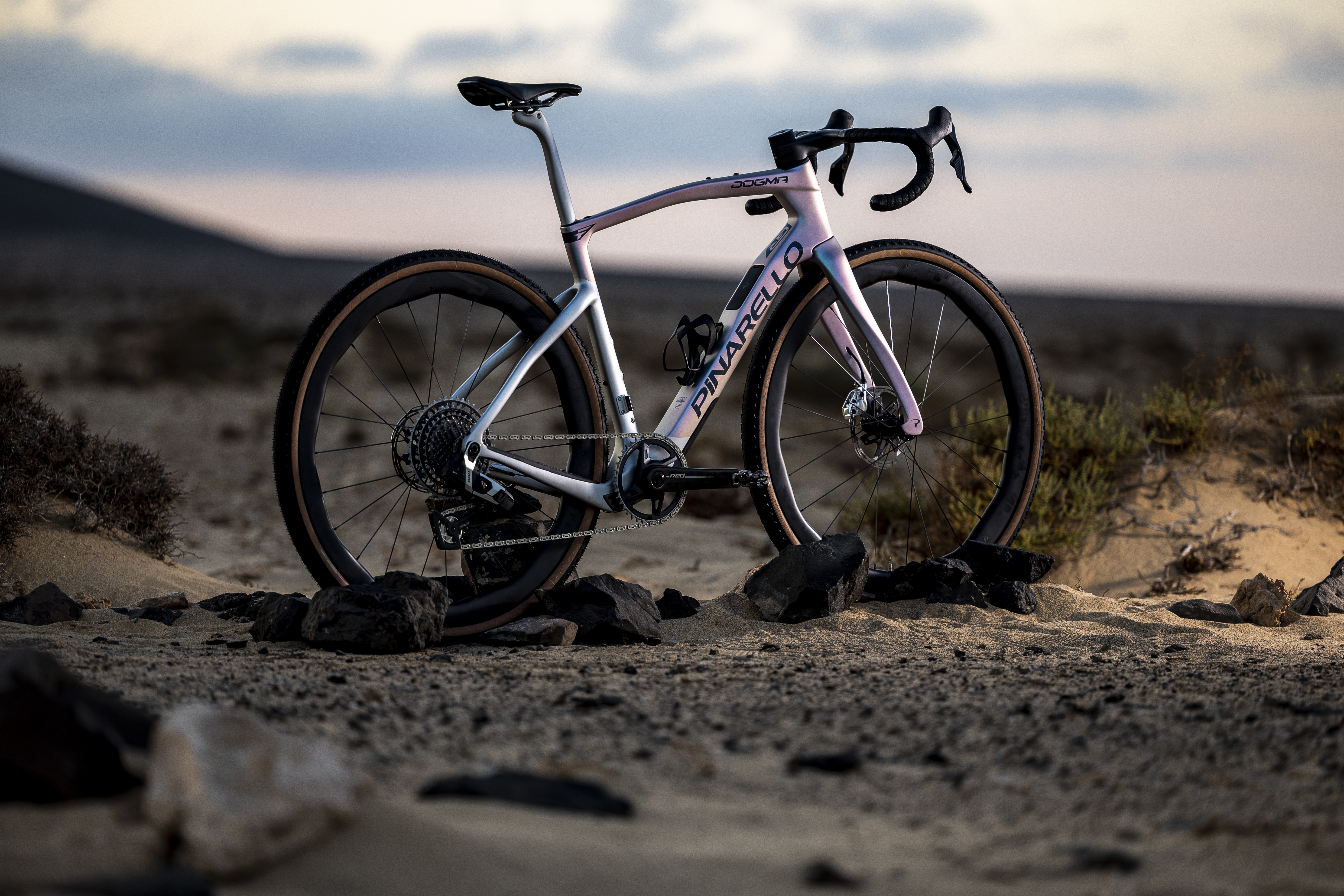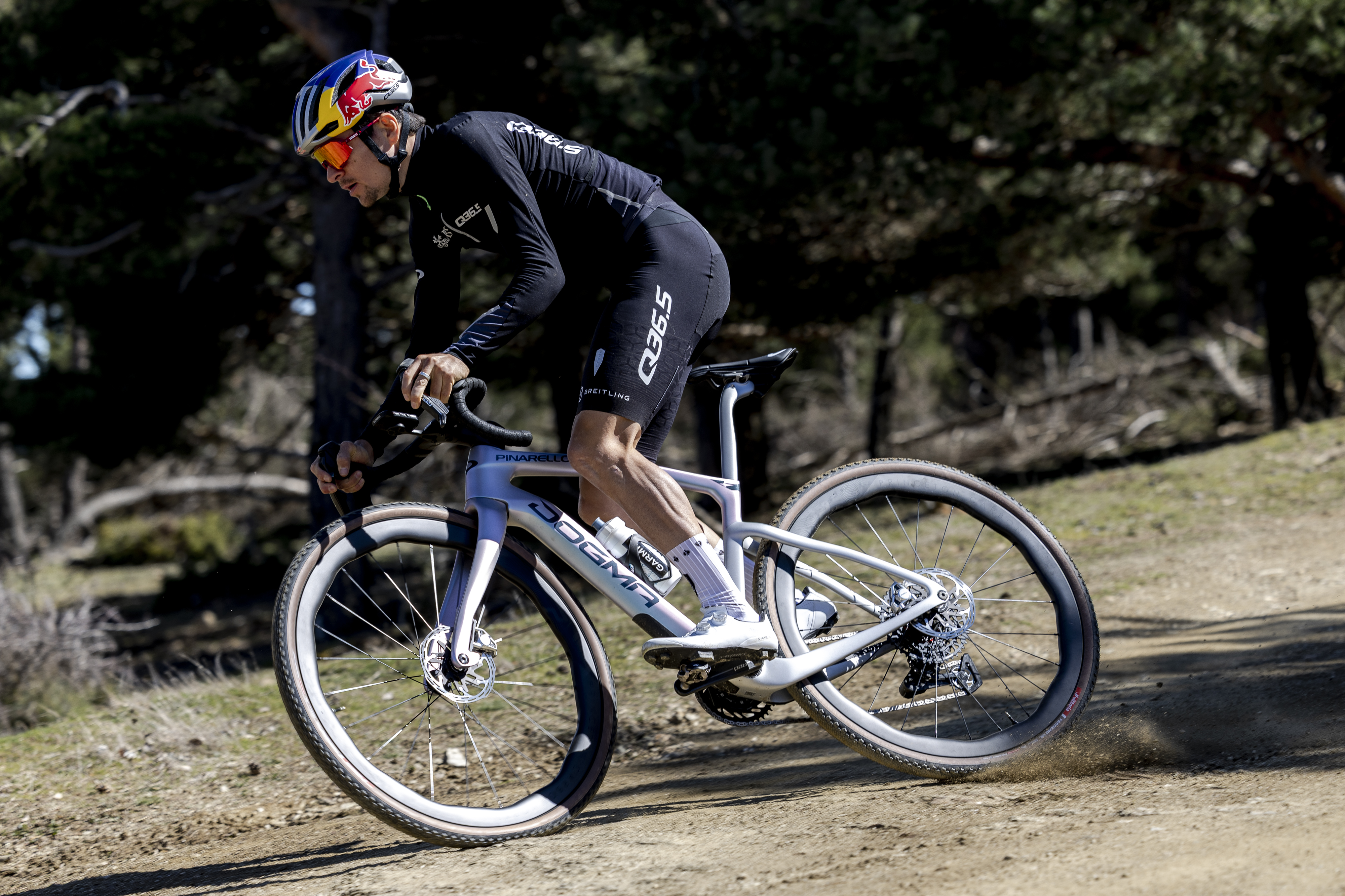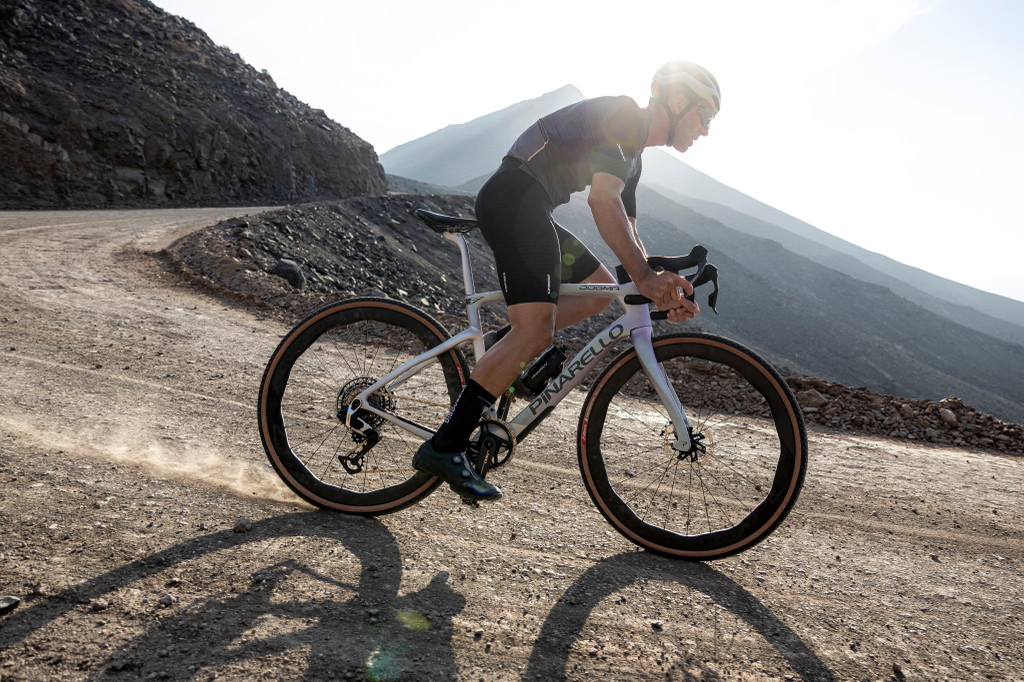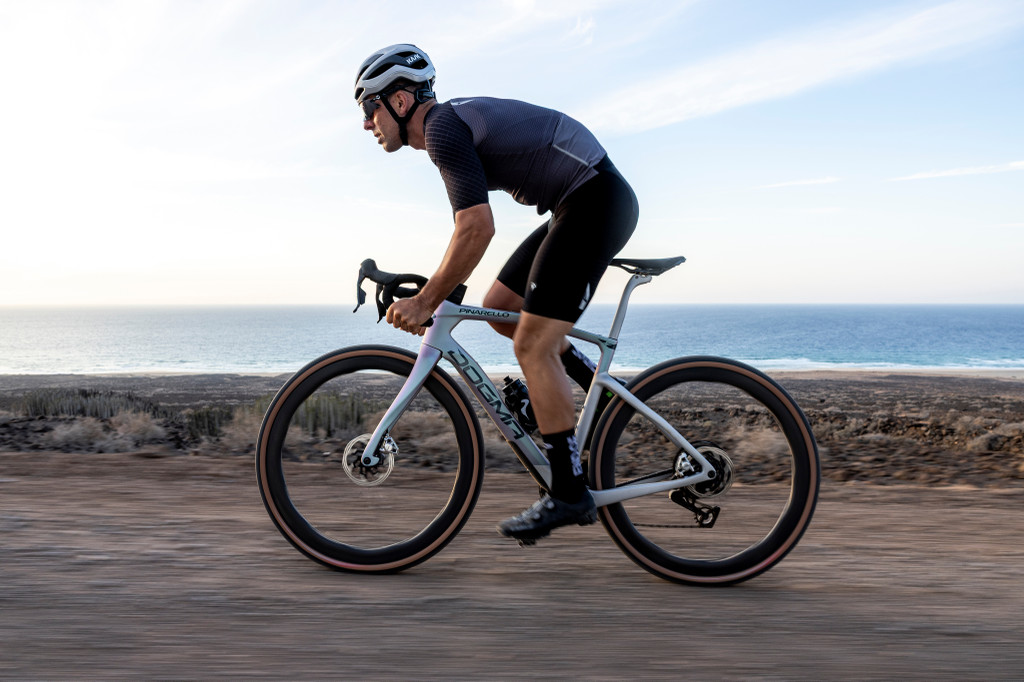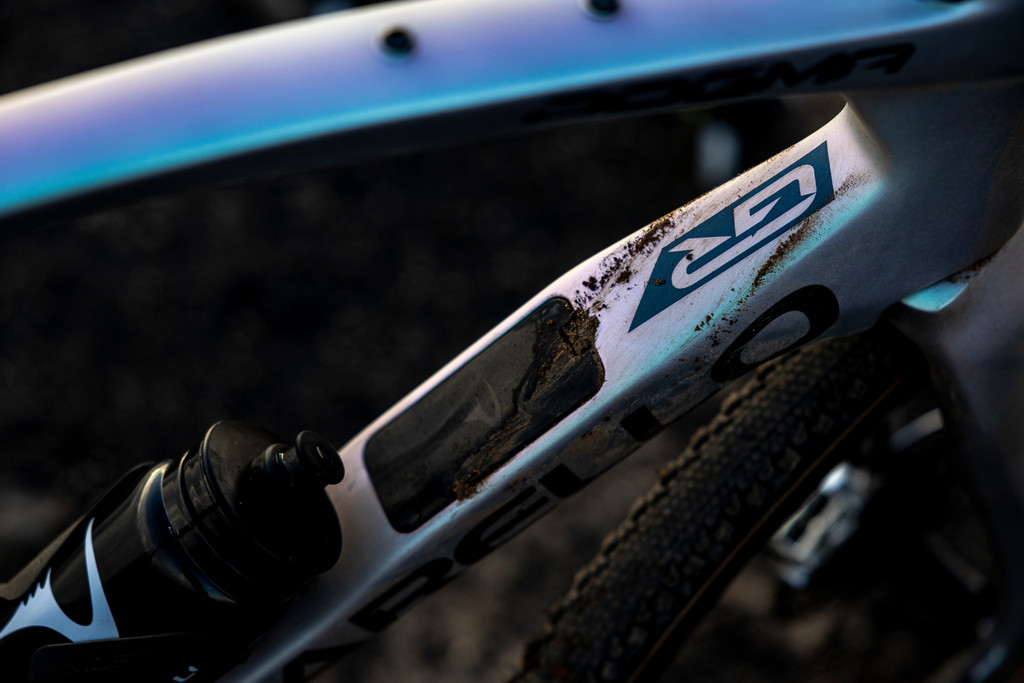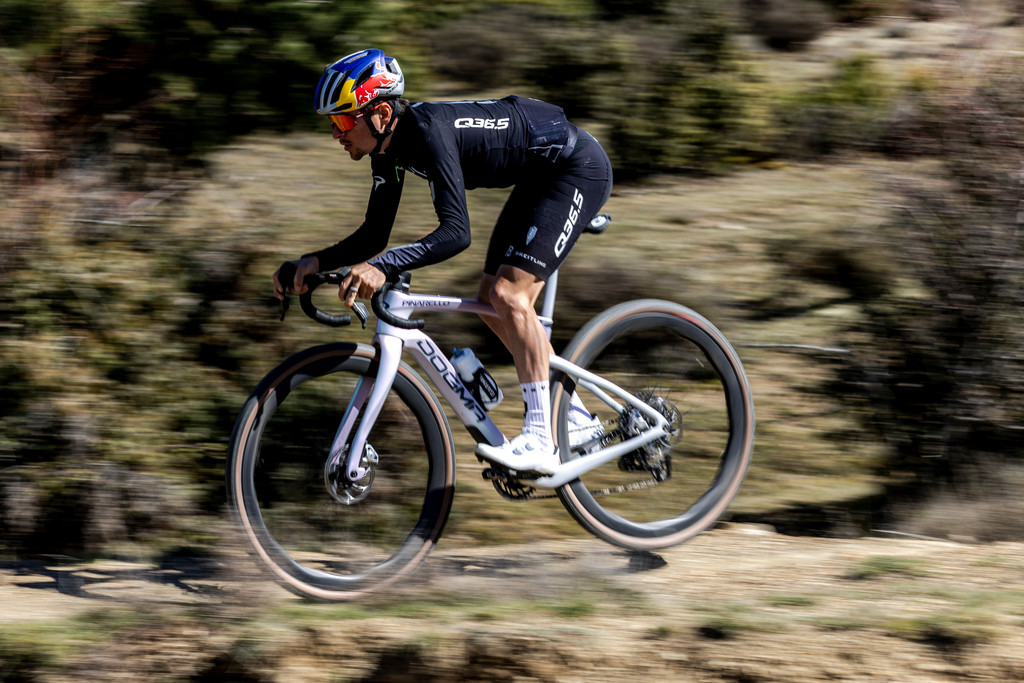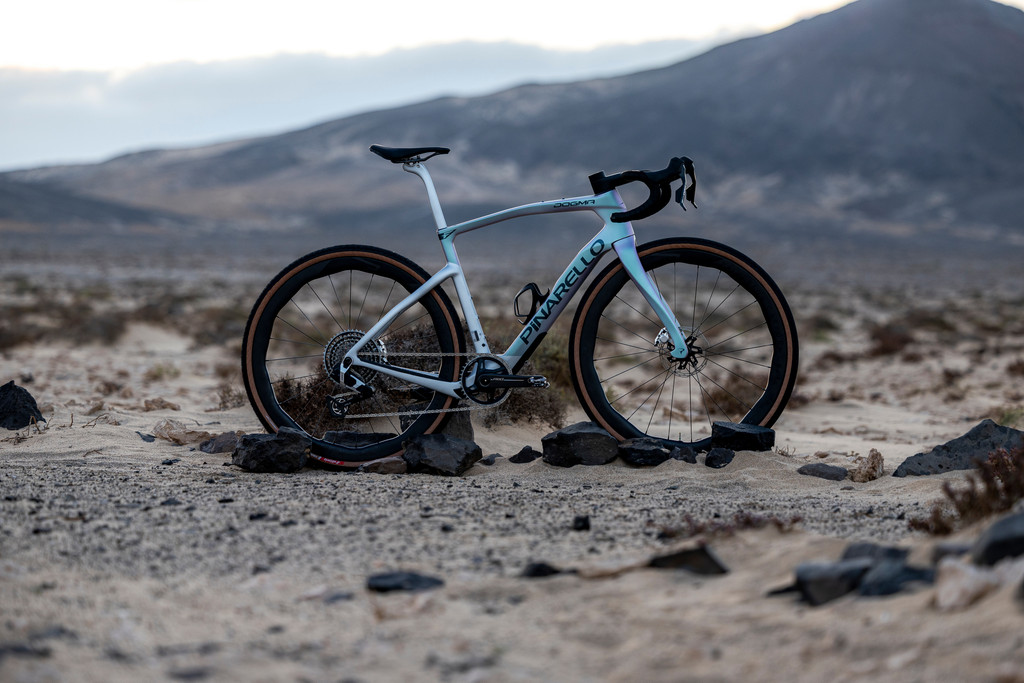
I was lucky enough to ride not one, but two new gravel bikes from Pinarello recently. The Italian brand has dabbled in off-road bikes for a while, with the original Grevil launched back in 2018 and more recently the Crossista CX bike and XC MTB, which were gold medal-winning bikes raced by Tom Pidcock and Pauline Ferrand-Prévot, and it's from the lessons learned developing those bikes that the Dogma GR was born.
The Dogma GR takes the brand's ubiquitous racing DNA from its top-tier road range to create an unsurprisingly, uncompromising race bike. Like Cervelo and Orbea, its gravel race bike is more road-oriented than a mountain bike, with tight clearances, sharp angles, and agile handling. Pinarello has split its two new bikes based on their intended usage: the Elite, designed for UCI gravel races, which typically last around four hours for the pros, and its sibling, the Grevil F, designed for longer and rougher events that last over five hours.
The Dogma GR
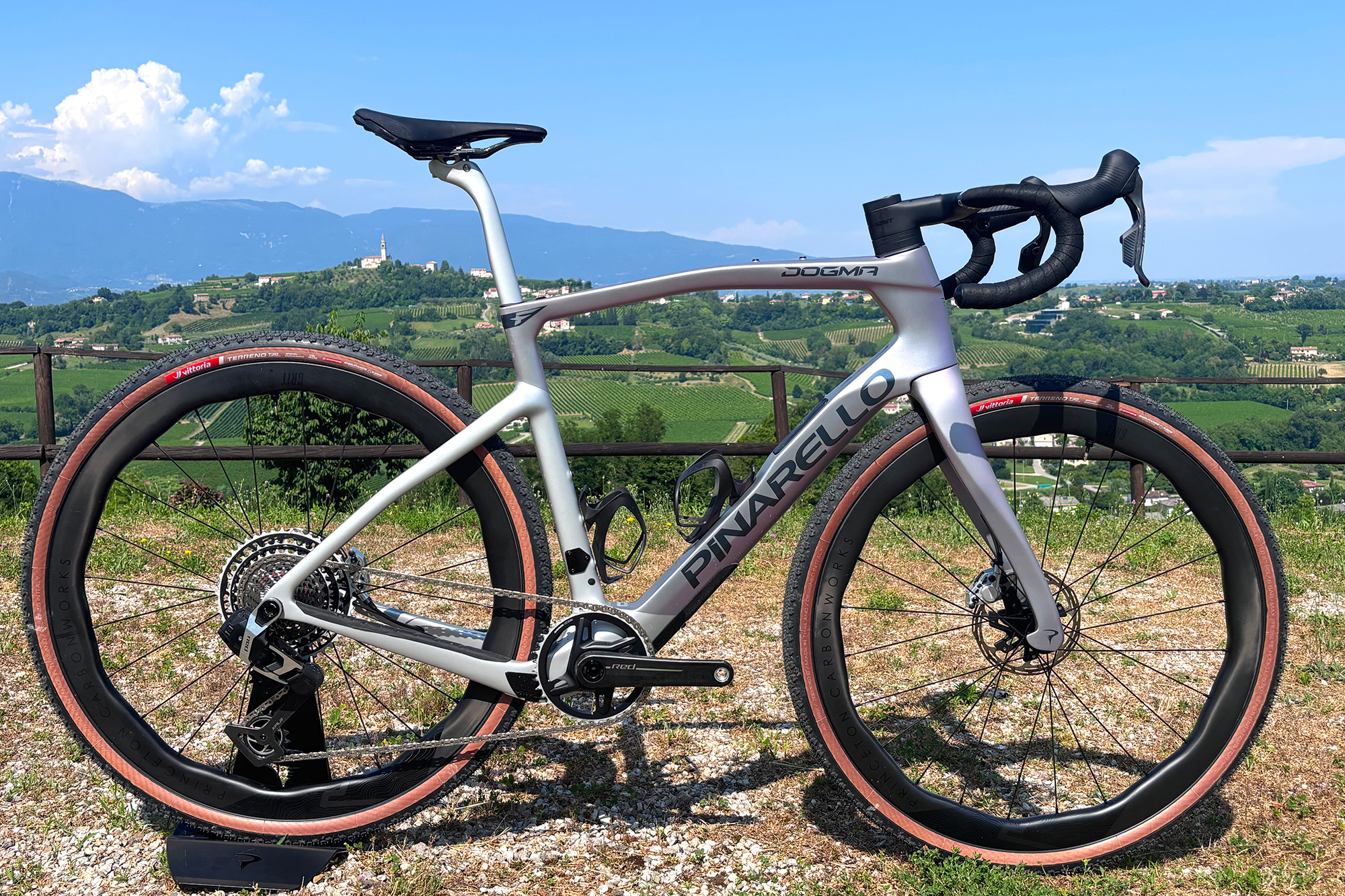
This is an unapologetically focused race machine, featuring aero tube shapes, tight angles, and somewhat controversially tight tyre clearances. As the name suggests, it shares a lot of its DNA with the top-tier Dogma F bike currently being raced by Ineos Grenadiers, so it's not that surprising to hear that former British gravel champion and current Ineos star rider Connor Swift was instrumental in its development.
It weighs 960g, which, when compared to climbing-specific bikes, isn't crazy, but for an aero frame built to take the repeated hammering of fast gravel riding, it's very impressive, with a complete bike (fitted with SRAM Red AXS groupset, Princeton Grit 4540 EVO wheels, and Vittoria 40mm tyres) tipping the scales at 7.35kg. Much of this is due to the long-standing partnership between Toray and Pinarello. In this frame, they utilise the same M40X, first introduced on the Dogma F, which boasts a high level of stiffness to weight compared to cheaper and easier-to-work variants found on lower-end models from the brand.
The frame has a similar silhouette to the road version, although it features rounder edges, giving it a slightly softer look. Other features, such as the aero keel around the bottom bracket, a narrow and more aerodynamic nose-shaped head tube with an E-TICR headset, and the curved Onda forks, are all present. Geometry is very close to the Crossista with a sound 10mm more reach in most models, which Pinarello refer to as race geometry and is geared towards maximum responsiveness, which makes a lot of sense when you see the hectic bunch starts of any of the UCI gravel events.
Interestingly, Pinarello have specced the same Talon Ultrafast one-piece carbon bar and stem as they use on the road range, which, though slightly flared at 7 degrees and a 7 degree inward bend, is less angled than we would typically see on an off-road bike, though the GR version specced does have two threaded bosses for mounting the optional TT gravel bars.
Speaking of which, Pinarello has also designed a very neat-looking bar setup that mounts centrally on the integrated handlebars and features mounts for your GPS and bottle cage at the top, as well as interchangeable ends for Di2, AXS blips, or standard close-end plugs, should you have some fast solo rides in mind.
As a frame designed for shorter events, it places less emphasis on comfort than the Grevil F. However, Pinarello has specced the same D-shaped Adaptive seatpost on the Dogma GR, which features around 8mm (depending on frame size) of flex built in, helping to dial out some trail buzz. Both bikes also come with an internal storage box featuring a long bag for fitting essentials, as well as a neat multi-tool built into the back of the cover. There's plenty of room to get the bag in and out, so much so that you can stash a few extra bits in there, like emergency gels, if you wish.
Tyre clearance is also suitably close, with room for 45mm rubber up front and 42mm in the rear on the Dogma GR, which might come as a surprise and goes against the current trend for wider tyres in gravel. They said the choice of rubber was based on feedback from their sponsored riders, who preferred the shorter wheelbase and the closer clearances it afforded.
The Dogma GR is available in 11 different sizes and three distinct paint finishes, with Interstellar Grey Matte being my favourite. It also comes in Luxter Blue and Matt Black. Build options align with its racing intentions, utilising the latest SRAM Red XPLR and Shimano Dura Ace, at an eye-watering €14,000/£12,500 for the XPLR build and €14,000/£12,000 for the Shimano option. It is also available as a frame-only option at €6,700, should you want to build one to a different specification.
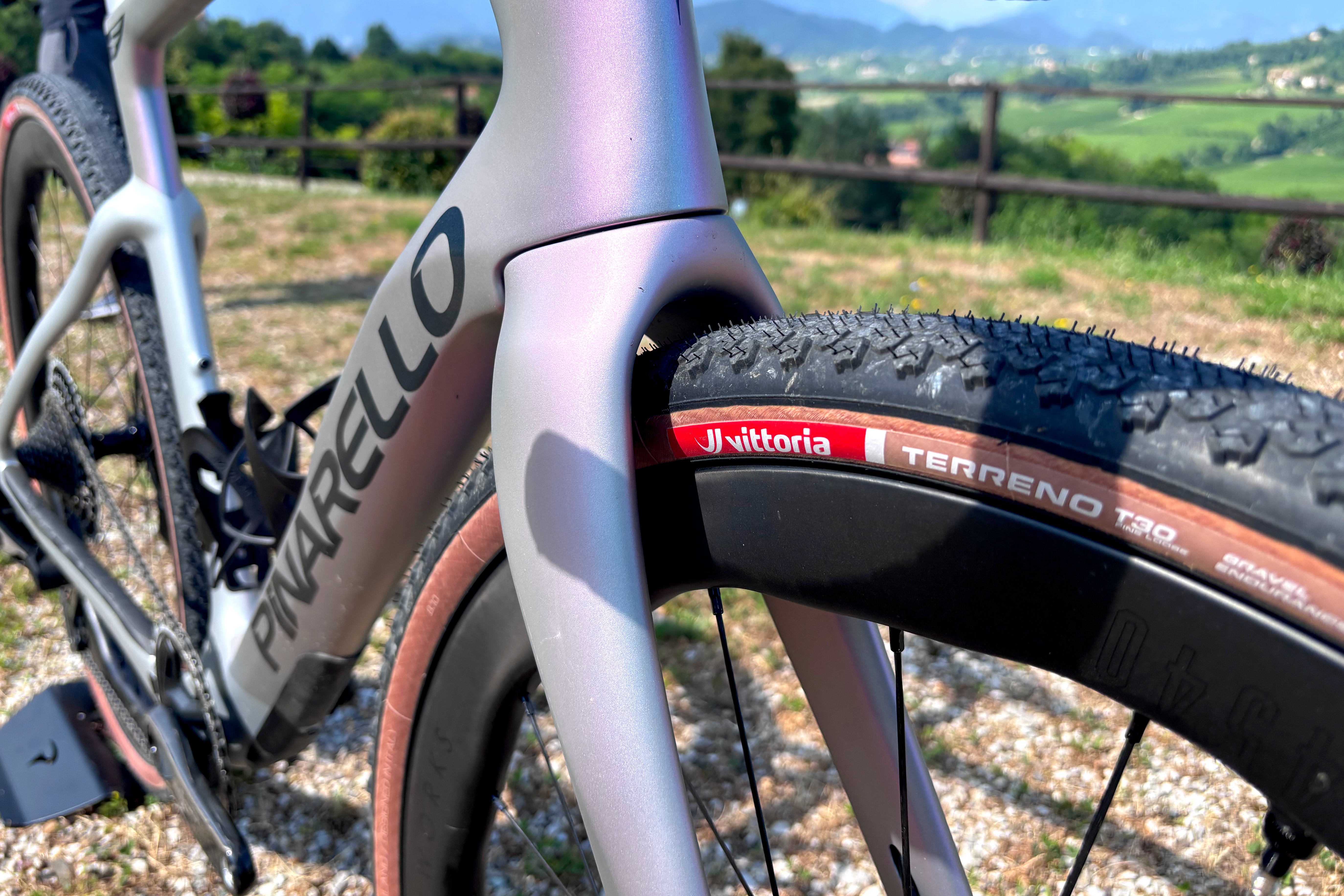
First Ride impressions
The first thing that caught my eye was its remarkable beauty. I was never a fan of the early Onda frames with curvy tube profiles, but this version looks fantastic, with a good mix of straight lines and curves in the right places. The high-quality paint job only accentuates this further. After standing and staring at it for a while, my attention was drawn to what I feel is the bike's weak link, tyre clearance.
Like many, I’ve been using wider and wider tyres for gravel, and the limit of a 42mm in the rear does feel like a step backwards. There's always the classic gravel review caveat of ‘it depends on where you ride/what gravel means to you’, but still, I'd like to see a bit more space available, as you see on other race bikes from Argon 18 and Willier.
To be honest, I quickly forgot about the tyre width, as I was blown away by how it rode and was enjoying riding some sublime Prosecco region Italian gravel. It felt more like a responsive road bike, with very little sluggishness and a real nimble feel, unlike anything else I've ridden off-road. When I spoke to the product guys, they said they wanted it to feel familiar to road riders and existing Dogma F customers, and they've nailed that. The position and response when standing on the pedals are remarkably similar to those of a road bike, to the point where I'd like to ride it with some wide, smooth rubber. This is much like Andy’s thoughts on the Cervelo Aspero, where he noted its all-road capability, and I think this would make a great multi-surface or all-road bike too. In fact, Pinarello have a set of custom mudguards or fenders for the Dogma GR, so could this be the ultimate UK winter bike? It would certainly be the most ostentatious, given the price, but it is versatile in that all-road context.
The route we rode had steep climbs with a mix of gravel terrain, which the bike coped well with that though I’m not sure how suitable it would for the chunkier gravel conditions we have in the UK, though to be fair the other bike in the range is much more suited to that, and for smooth gravel and rough roads it was a delight to ride.
Comfort claims are hard to gauge on a short ride on unfamiliar terrain but id say it didnt feel as harsh as you would expect, clearly the Adaptive seatpost was doing a sterling effort on dialling out trail buzz as the Princeton wheels and relatively narrow tyres Vittoria T30 tyres though fast are not exactly the plushest of setups.
I'm a big fan of the Talon Ultrafast GR handlebar on a road bike as its slightly triangular profile in the drops is very comfy, but I prefer a bit more outward sweep in this use case scenario. Not a huge amount more, but I feel a few degrees would make the transition from drops to hoods in a hectic trail section easier.
Aero claims are impossible to verify outside of a wind tunnel, but it certainly felt fast on the long road descent we rode. Its race geometry made hooking up hairpin corners and changing line choices a delight, which would translate well to the chaotic nature of a gravel race, provided you have the skills to take advantage of it.
I loved riding the Dogma GR, as you'd expect from something costing £12,000; it's a lovely bike to ride. Still, I was left wondering whether they've made it too pro-specific, and its narrow tyre clearances feel like a contradiction of the feedback we hear from many gravel racers across the globe who opt for at least 50mm rubber on most courses. We will have a full review once we accumulate some miles on our test bike in more familiar terrain to make up our minds.
The recommended retail prices are as follows:
SRAM - €14,000, £12,500, $14,500
SHIMANO - €14,000, £12,000, Not available in the US
Frame only - €6,700
Model weights are as follows:
Dura Ace Di2 – Princeton Grit 4540 – Vittoria Terreno T30 40mm – Talon Fast Gravel - 7.30kg
Red XPLR AXS - Princeton Grit 4540 – Vittoria Terreno T30 40mm – Talon Fast Gravel - 7.35kg
We will have a more in-depth review of both coming soon. For more information, please visit Pinarello.com.
